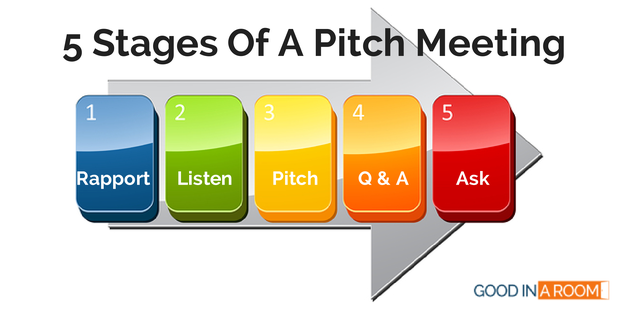Pitch Meetings Structure Stage 3: Deliver the prepared component of your pitch

Pitch Meeting Stage 3: The Pitch
The goal: to keep the decision-maker’s attention
Stage 3 is where you deliver your prepared pitch. Even if the decision-maker doesn’t want to buy your project, if you can hold their attention with your pitch, they may want to work with you in some other way.
The trap: “winging it”
Making it up as you go along and hoping things work out is the mark of an amateur. By the time you get a meeting with a decision-maker who can make something happen, you should have a prepared pitch that you can deliver without referring to notes.
You should have a short pitch as well as a complete pitch ready to go. Your complete pitch is essentially your beat sheet – here are examples of beat sheets for movies.
Key tactic: test your pitch in advance
To succeed in this stage of the meeting, use these three steps to test your pitch before you meet with the decision-maker:
- Choose a feedback group. This can be friends, family, other writers, but no gatekeepers or decision-makers. You should have at least six people, ideally none of whom have heard your pitch before.
- Rehearse your pitch on audio and ideally on video prior to presenting it to anyone in your feedback group. In my experience, few people like to see themselves on camera, but this is crucial preparation.
- Call or meet with people one at a time, pitch them, and try to get answers to the following questions:
- Did they understand the idea?
- What elements did they like?
- What elements did they not like?
PROCEED to STAGE 4
————————————————————————————–
Pitch Meetings Happen In Five Stages
- In Stage 1, you build rapport and warm up the room.
- In Stage 2, you ask questions and listen to show respect.
- In Stage 3, you deliver the prepared component of your pitch.
- In Stage 4, you deliver the “improvised” component of your pitch.
- In Stage 5, you ask for one thing if necessary and leave on a good note.

